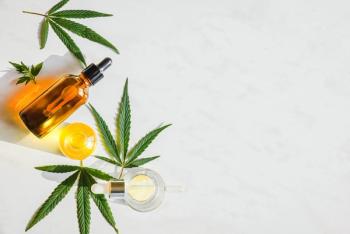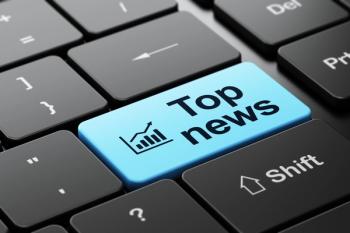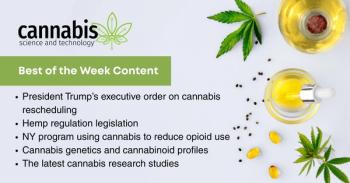
Cannabis Science and Technology
- January/February 2021
- Volume 4
- Issue 1
Connecting Cannabis with the Evolving Needs of the Consumer

Here we discuss issues such as how a repeatable outcome is a critical component of developing cannabis as a reliable medicinal treatment, insight into how to work out extraction goals such as quality terpene development, and more.
Researchers and other stake-holders are taking deep-dive steps into more cannabis research, with better laboratory tools and clearer objectives
Laboratory discoveries and new grow technologies are being brought to bear on the cannabis plant at a rapid clip, helping to reveal more about the plant on both a genetic and chemical level, while providing opportunities for manufacturers and processors to gain repeatable outcomes within the framework of the entourage effect.
This third 'Tech Innovations" column discusses issues such as how a repeatable outcome is a critical component of developing cannabis as a reliable medicinal treatment. This article also provides insight into how to work out such extraction goals as quality terpene development and the exact identification of a strain (or cultivar) going forward.
The era of guesswork based on anecdotal reports is quickly coming to an end as technology developments about cannabis follow a general trend to find and rely on a more personalized product for both medical and recreational consumers.
First—Identifying the Plant
The cannabis plant itself still harbors botanical mysteries, even as more and more products are developed and additional laboratory work reveals more about what it is, what’s inside it, and what it can really do for humans.
Though there has been a lot of work on the genetics of the plant, that’s not enough, according to Peter Harrington, professor of chemistry at Ohio University where he is working on developing intelligent chemical instruments and identifying a chemical “fingerprint” for cannabis (1).
An intelligent instrument furnishes user- or problem-defined information as opposed to data that must be interpreted by a scientist. Harrington’s group is developing algorithms that perform real-time signal processing, modeling, and interpretation. “A lot of times for characterizing plants, you really can’t rely on genetic analysis,” he said. “It’s because, based on the growing conditions of the plants, different proteins and different metabolites will be expressed.”
He said that they do this plant identification more accurately by using ultraviolet visible spectroscopy (used to obtain the absorbance spectra of a compound in solution or as a solid, that is, observing the absorbance of light energy or electromagnetic radiation [2]) or infrared spectroscopy (used in the analysis of infrared light interacting with a molecule by measuring vibrations of atoms [3]) to get an overall snapshot of the chemical composition of a plant. “The advantage of using spectroscopy is that it’s really fast. And in some cases, it can be implemented at a low cost,” he said. “Another method, like chromatography to separate all the compounds in the plant, takes time and a lot of consumables.”
Harrington says that his group uses a pattern recognition approach when they look at the overall chemical profile of a plant. “The question we want to ask is very simple: Is it the same or is it different? If it’s different, then we can use these more expensive types of analyses where we can go in and identify and quantify all of the compounds that happen to be different. That’s also a good first approach to looking at all of the pharmaceutical properties of the plants.”
Different strains will have different effects on different people, he said, so this type of analysis creates an avenue for personalized medicine and personalized treatment—a current patient consumer trend in medicine. “The idea is that by getting feedback from customers and consumers, we can use this identification as a sort of marketing tool to direct them towards strains that they would prefer or that might benefit them.”
Most of the cannabis plants that the group used in their research were hybrids of sativa and indica, which represents the typical cannabis plant today that has evolved over thousands of years of human cultivation and cross-breeding. “What we are looking at are the actual chemicals that happen to be present in the plant,” he said.
There is a lot of interest in terpenes and terpenoids compounds, he explained, and there is still a growing list of the other class of compounds—cannabinoids—that need to be identified.
To assist in their work, San Jose-based company Molecular Devices, makers of bioanalytical measurement systems for life science research, pharmaceutical, and biotherapeutic development, donated a microplate reader used to detect biological or chemical properties of a sample. That device will give Harrington’s group the ability to automatically collect spectra. “One of our goals is to really show the value of these very low-cost high-throughput instruments for characterizing things like the plant material or the oils,” he said. “It can be used primarily to look at the ultra vision spectrum, but can also scan into the visible and infrared. So the visible tells us something about the color. And the color properties are important too for the consumer market. The infrared gives us another avenue for looking at the overall chemical composition.”
The whole medical field is finally starting to recognize and use the concept of personalized medicine, he said. For example, a veterinarian will give an animal an amount of medication based on the mass of the animal. “But doctors don’t do that with people,” Harrington said. “Typically everyone no matter their size gets the same dosage of a drug in a prescription.”
Studies about medical cannabis are still basically anecdotal, he said, with ongoing discussions among researchers about the entourage effect (the action of other compounds in the cannabis plant to produce therapeutic properties [4]) and how those other therapeutic compounds could or should work within the cannabis treatment. “Typically the pharmaceutical industry will look for just one active component and try to purify it and market it,” he said. “Future trends will be forms of edible marijuana for treatment instead of smoking anything.”
Next—Inventing, But Not Reinventing
Some of the new methodologies being brought to bear in the cannabis industry are processes and procedures used for years in other plant production industries. Take for example, terpene extraction, and the extraction processes for any other volatile plant compound in a fruit or vegetable. “If it’s an aroma compound that means it is volatile, because that’s the only way it’s reaching the olfactory sensors in your nose,” said Christian Sweeney, president of lab operations for Sonoma Lab Works in Santa Rosa, California. “And that means that they are going to be delicate. You need to handle them with precision.”
Sweeney has a background in chemistry and food science, including research in certain water soluble flavonoids in fruits and vegetables. “On the flavor side, the way you manage a volatile compound like a terpene is very similar,” he said. “Whether I am looking to get a top note from a hops plant or a cannabis plant or strawberries, watermelon or whatever, the way you protect those volatile compounds in storage, and the way you extract them by trying to be less aggressive in the way you heat them during the extraction process, are all totally analogous.”
Sweeney said that when you are beginning a terpene extraction process, you need to create a method optimization or process optimization strategy. “You need to be able to measure the work you are doing. If you are making a terpene-rich extraction process, you either need to have the equipment in house or rely on a third party lab to be able to do terpene testing to understand that, as you change different variables in the extraction process, such as temperatures, pressures, and flow rates, you need to have a result associated with that.”
Sweeney explained that you need some type of ruler if you are changing temperature, for example, to see what is happening to the overall terpene profile. “Ideally, we are always comparing that back to the original source material—the flower—and seeing which of those temperatures is providing the best results,” he said.
Going forward in terms of terpene extraction, Sweeney would like to see more technologies that would minimize solvents with high throughput. “If I could identify what the magic bullet would be here it would be something that is highly scalable and high-throughput that delivers a major identical extract, meaning the compounds that I care about from the original source material maintained in their original ratios. It would have the least requirement for backend filtration, winterization, and evaporation,” he said. “That to me is the holy grail.”
Winterization, for example, leverages melting point differences between the various components in an extract to precipitate out unwanted plant waxes at a reduced temperature. It is then possible to filter away those plant waxes while retaining most of the other compounds in the extract (5).
Super critical CO2 extraction gets closest to “checking most of those boxes,” in the extraction process, said Sweeney. But from his personal experiences, phenomenal extracts can be made from hydrocarbon or ethanol solvent extracts, and traditional dry sifting in rosin methods as well.
What is needed now is standardizing the methods of analysis for the cannabis industry. That is the goal of the Cannabis Working Group for the American Council of Independent Laboratories (ACIL) (6), which is a laboratory testing organization actively working with national lawmakers to help develop new legislation for the cannabis industry. “That is a real critical piece to getting everyone using similar methods for consistent results from lab to lab. That is going to be a real important maturity point for our industry as we move forward,” said Sweeney.
Bringing Clarity to Nanotechnology
Cameron Clarke is the CEO of Sunderstorm in Sun Valley, California, makers of nanomolecular gummies (Kanha), nanomolecular sublingual sprays (Nano5), and vape cartridges (Wind). The company recently announced partnerships in Colorado, Massachusetts, and Canada (7).
Clarke calls himself a citizen scientist, self-studied in molecular biology for about five years before getting into the cannabis industry. “I knew that science would help the industry transition from this wild wild west environment, where you had no idea what you were getting in any of the products in regards to pesticides or potency, to having products that were consistent and reliable and clean,” he said.
Sunderstorm (the name means a thunderstorm where the sun stays out the whole time [8]) tested their own products against others in the industry and found that, in terms of potency, the other products never matched what was on the label. “If we could dial in that consistency in our edibles, then just like with drinking a beer or a glass of wine, the consumer would know what that experience would be like," he said. "We wanted to be that brand that delivered that consistent experience.”
He said that they were acknowledged as producing the most accurate formulated edibles in the cannabis industry by the respected Los Angeles-based cannabis, hemp and cannabidiol (CBD) laboratory testing company CannaSafe (9).
In the early days of edibles, consumers would see a label on an edible saying it had 500 mg in it, but they would have no idea how much that was. Testing would show that there was actually only 50 mg. “The consumer had no point of reference back then,” Clarke said.
The first product Sunderstorm sold was the Nano5 sublingual tincture using their nanotechnology. Clarke said that they were the first company in the industry to deliver a real nanotechnology product. “Nobody knew what nanotechnology was, or wanted to know what that was,” he said. “So we had a lot of ‘missionary’ work to do, and go out there teaching why these products are important. It’s important to have consistency and high bioavailability and rapid onset, and that’s what a nanotech product can do.”
According to Sarasota, Florida neurologist Dr. Daniel Stein studying the neurology of cannabis and treating medical cannabis patients, our bodies contain endocannabinoid system receptors, and cannabis contains cannabinoids, terpenes, and flavonoids which connect with these receptors. Scientists are unlocking the potential of treating diseases—such as cancer, multiple sclerosis, Parkinson’s, diabetes, and serious inflammation—by utilizing nanotechnology and the cannabis plant. Cannabinoids can be stored inside a nanoparticle and delivered to its intended target without degrading before its controlled release.
Researchers are also working on a “superclass” of cannabinoid nanoparticles with the ability to provide treatment across a broad spectrum of diseases (10).
Nanotechnology had been used in pharmacology for decades, Clarke explained, so there was an established track record about how they worked.
But some cannabis manufacturers just used the term as a buzzword for sales. For example, there were nanotechology CBD water products introduced a few years ago, and most of them had no cannabinoids in them, he said. “They had these hocus pocus stories about water molecules enveloping the cannabis particles that were simply not true. That spooked the industry about whether or not nanotechnology was real.”
Flavor has been a huge challenge for the company, he says, because nanotechnology use typically enhances the bitterness of the cannabinoids in their gummies. “Working to mask that bitterness has been an ongoing challenge from the get-go," said Clarke.
He said that Sunderstorm worked with a partner to test the blood of a consumer who had been using their sublingual product to see how much of the cannabinoid ended up in the bloodstream. “We knew that our products work, not just anecdotally, but because they had science behind them.”
For the nanotech gummies, they based that product on the same science used by Nestle in some of their products because they worked for a year and half on how to properly flavor them. “All of the nanotechnologies we have embedded in our products have been based on FDA Generally Regarded as Safe (GRAS) certifications from decades of experience with these technologies,” said Clarke (11).
Still, the company continues to focus on the two biggest problems with edibles: variability of potency and time to onset. “One of the things we drive towards is compressing the time from ingestion to onset in all of our products,” he said. “Just solving the potency variability has allowed a lot of new consumers to adopt cannabis who never would have in the past.”
Out of This World Work
One of the more inventive ways of trying to find out more about the cannabis plant is happening 240 miles above the earth on the International Space Station (ISS). ISS has already been the scene for laboratory work by beer brewers such as Budweiser, Coors, and Sapporo.
Budweiser sent barley seeds to the ISS in December 2017 to see how they withstood gravity, and how they would germinate in that environment, with the goal of being the first beer brewed in space (12). Now it’s time to study cannabis in that microgravity environment.
Space Tango, based in Lexington, Kentucky, is working with a company providing hemp genetics, Atalo Holdings, to enhance and bioengineer hemp for biomedical applications back on Earth. “Using microgravity, we envision a future where many of the next breakthroughs in healthcare, plant biology and technology may well occur off the planet Earth,” co-founder and chairman of Space Tango, Kris Kimel, said in a press release about the project (13).
“When we send plants to the International Space Station, we eliminate one core, constant force, to which plants are well-adapted—gravity,” explained Dr. Joe Chappell, a member of the Space Tango Science Advisory Team who specializes in drug development and design and has personally conducted microgravity research on the ISS. “When plants are ‘stressed,’ they pull from a genetic reservoir to produce compounds that allow them to adapt and survive. Understanding how plants react in an environment where the traditional stress of gravity is removed can provide new insights into how adaptations come about, and how researchers might take advantage of such changes for the discovery of new characteristics, traits, biomedical applications, and efficacy.”
From discovery and cultivation by humans more than 5000 years ago, to becoming one of the most intriguing plants for scientists to explore even in outer space, cannabis continues to both challenge scientists and reveal characteristics that have been proven to help all of mankind—and indeed, certain animals as well.
As more research digs deeper into this plant, and as restrictions about research and product development are either changed or eliminated altogether, the data suggests that we are still just on the ground floor, yet taking careful steps into more illuminating and medically beneficial discoveries.
References
https://www.ohio.edu/cas/peter-harrington .https://chem.libretexts.org/Bookshelves/Analytical_Chemistry/Book%3A_Physical_Methods_in_Chemistry_and_Nano_Science_(Barron)/04%3A_Chemical_Speciation/4.04%3A_UV-Visible_Spectroscopy .https://chem.libretexts.org/Bookshelves/Physical_and_Theoretical_Chemistry_Textbook_Maps/Supplemental_Modules_(Physical_and_Theoretical_Chemistry)/Spectroscopy/Vibrational_Spectroscopy/Infrared_Spectroscopy .- S. Blasco-Benito, M. Seijo-Vila, M. Caro-Villalobos, I. Tundidor, C. Andradas, E. García-Taboada, J. Wade, S. Smith, M. Guzmán, E. Pérez-Gómez, M. Gordon, C. Sánchez, Biochemical Pharmacology 157, 285-293 (2018).
- C. Sweeney, Cannabis Science and Technology 1(1), 54–57 (2018).
https://www.acil.org/page/Cannibis_Working_Group .https://www.prnewswire.com/news-releases/sunderstorm-expands-market-presence-to-colorado-massachusetts-and-canada-301157851.html .https://www.urbandictionary.com/define.php?term=sunderstorm .https://csalabs.com .https://www.neurologyofcannabis.com/blog/cannabis-nanotechnology/ .https://www.fda.gov/food/food-ingredients-packaging/generally-recognized-safe-gras https://www.popularmechanics.com/space/solar-system/a30141192/budweiser-space-beer-brewing/ .https://spacetango.com/latest/pressreleases/space-tango-launches-microgravity-hemp-enterprise/ .
About the Columnist
David Hodes has written for many cannabis publications, and organized or moderated sessions at national and international cannabis trade shows. He was voted the 2018 Journalist of the Year by Americans for Safe Access, the world’s largest medical cannabis advocacy organization.
How to Cite this Article
D. Hodes, Cannabis Science and Technology4(1), 32–35 (2021).
Articles in this issue
almost 5 years ago
Turning the Page to a New Yearalmost 5 years ago
Cannabis Water Report Highlights Opportunities for Water Efficiencyalmost 5 years ago
Lighting: Setting the Stage for Genetic Potential in Cannabis and Hempabout 5 years ago
A Market Overview: CBD TopicalsNewsletter
Unlock the latest breakthroughs in cannabis science—subscribe now to get expert insights, research, and industry updates delivered to your inbox.




